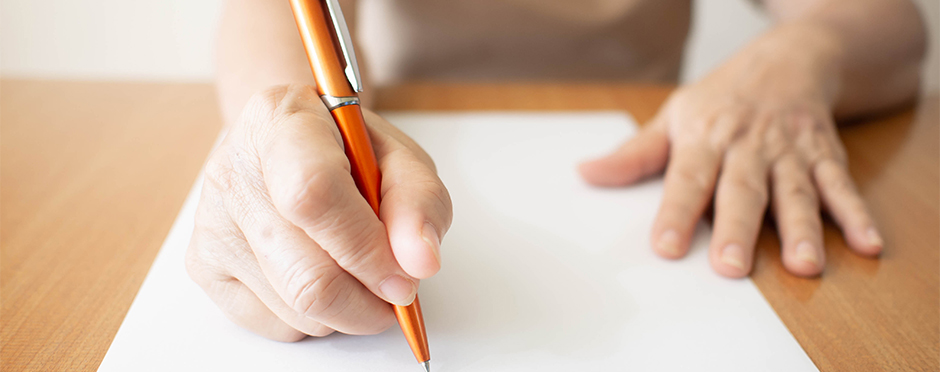
Writer’s Cramp
Leave a CommentWriter’s cramp is a form of dystonia, or involuntary muscle contractions, which makes the fingers and hand move into abnormal postures when writing or performing other intensive hand activities, such as typing, playing an instrument, eating/feeding, brushing teeth, or brushing hair. This can cause pain, spasms, fatigue, and decreased legibility of penmanship or decreased task performance. A specific activity or movement can bring on the symptoms. The fingers may extend straight, or the wrist may flex and bend while the elbow extends straight. One might lose their grip or feel uncoordinated. Muscle spasms and hand cramps are more common in men than women. Poor posture and increased writing or playing time of an instrument can play a part in the symptoms, as well as increased stress or anxiety.
Treatment
While some medications and Botox can effectively decrease the condition’s intensity, there may be side effects and time limited efficacy (4-6 months post-injection). Anti-anxiety medications may be considered for those with known anxiety concerns. 2,3
Correcting poor posture and keeping the arm in a relaxed position of the shoulder, elbow, and wrist when writing, along with adjusting the paper’s position in relation to the body, can help decrease symptoms. Strengthening the postural muscles of the back, shoulder, and upper arm may improve strength of the postural muscles. Weight-bearing, as well as hand, forearm, and upper arm and trunk stretches, can help to normalize tone in the upper extremity to decrease cramping. 1
Utilizing a larger writing device, or using an orthotic or splint, may help to restore proper mechanics or techniques and can help retrain the brain to use the correct muscles for the job, avoiding cramping from poor mechanics or muscle imbalance. When other activities of daily living are affected, such as brushing teeth, adapting or modifying the handle can help to decrease cramping. Cold hands can increase cramping and warming the hands prior to activity can be beneficial. Adding texture to a writing device or handle of a tool can increase input to the brain and keep the tool from slipping in hand, avoid using too much pressure to hold onto the device, and decrease cramping as well. 1,2,3
Writer’s cramp is often observed in those with relatively high anxiety or perfectionism, which can be required to play a difficult music composition. Relaxation techniques, breathing, meditation, and activities like yoga can be beneficial if one’s mental state worsens the cramping. Seeing a counselor can assist with identifying stressors and teach coping methods, improving one’s mental status, which can aid in decreasing writer’s cramps.1,2,3,4
Come See Us
If you have questions about writer’s cramps or other hand dysfunction, an Athletico hand therapist can assist with restoring your hand function.
Find a Hand Therapist Near You
The Athletico blog is an educational resource written by Athletico employees. Athletico bloggers are licensed professionals who abide by the code of ethics outlined by their respective professional associations. The content published in blog posts represents the opinion of the individual author based on their expertise and experience. The content provided in this blog is for informational purposes only, does not constitute medical advice and should not be relied on for making personal health decisions.
References:
1 “Chapter 20 .” Diagnosis and Treatment Manual for Physicians and Therapists: Upper Extremity Rehabilitation, 5th ed., Hand Rehabilitation Center of Indiana, Indianapolis, IN, 2001, pp. 206–206.
2 “Common Causes of Hand Cramps.” The Hand Society, 8 Mar. 2021, https://www.assh.org/handcare/blog/common-causes-of-hand-cramps.
3 “Hand Cramps: Causes and Treatment: The Hand Society.” Hand Cramps: Causes and Treatment | The Hand Society, 2020, https://www.assh.org/handcare/condition/hand-cramps.
4 “Hand Dystonia.” Dystonia Medical Research Foundation, 2022, https://dystonia-foundation.org/what-is-dystonia/types-dystonia/hand-dystonia/.
